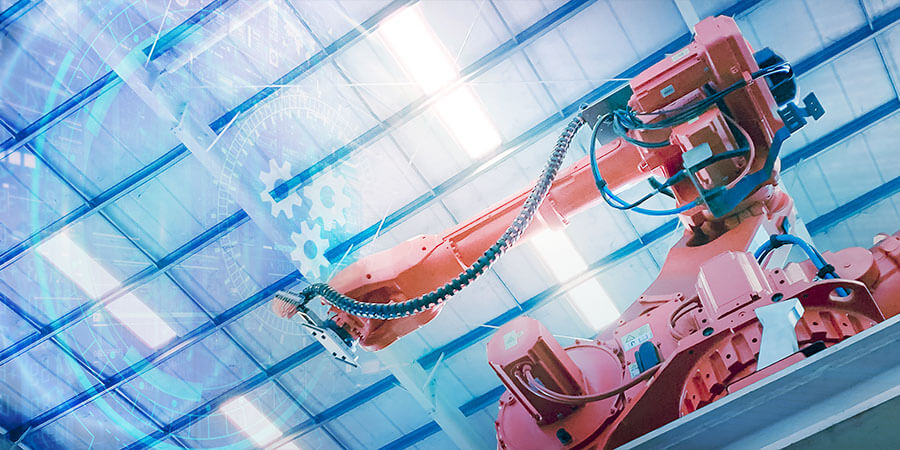Explore the dynamic landscape of manufacturing automation! From assembly lines to supply chain management, technology has transformed production processes. With innovations like robotics, inventory control systems, and quality assurance tools, manufacturers boost efficiency, cut costs, and maintain consistent quality. Join us in this blog post as we delve into key examples of automation in manufacturing, uncovering how it reshapes the industry. Get ready for an insightful journey into the captivating world of manufacturing process automation!
Evolution of Automation in Manufacturing
The evolution of manufacturing automation has transformed the industry from manual labor to seamless integration of machines and technology in every production aspect. It began with mechanization, replacing human effort with basic tools, then advanced to automation using electricity and computer control systems. Robotics revolutionized assembly lines, enhancing efficiency, precision, and productivity.
Automated supply chain management provides real-time visibility into stock levels, optimizing production schedules. Quality control benefits from sensors and cameras detecting defects during production. Automated packaging and shipping streamline processes, reduce waste, and enhance customer experiences.
As technology rapidly advances, emerging trends like artificial intelligence-powered robots and real-time optimization through machine learning algorithms promise further innovations in manufacturing automation. Embracing these trends offers advantages such as increased efficiency, cost reductions, improved safety, and consistent quality standards. It’s an exciting era for the manufacturing industry with endless possibilities for growth and optimization.
Examples of Automated Processes in Manufacturing
Robotics and Assembly Lines
Robotics and assembly lines have revolutionized manufacturing, with automation empowering robots to perform intricate tasks efficiently. Previously, human labor dominated, causing time-consuming processes and increased errors. Now, robotics automates tasks like picking and assembling components, enhancing productivity, and maintaining consistent quality.
Equipped with sensors, robotic arms execute precise movements and handle delicate materials without causing damage. This flexibility extends to manufacturing operations, allowing robots to adapt quickly to different product variations, eliminating the need for reconfiguring traditional assembly lines. Integrated robotic systems improve safety by reducing workers’ exposure to hazards and heavy lifting.
By delegating such tasks to robots, employees can focus on critical aspects of production that require human skills and decision-making abilities.
Supply Chain Management and Inventory Control
Supply Chain Management (SCM) and Inventory Control are important for manufacturing success. Automation, like using software systems to monitor and manage inventory, streamlines operations. These systems automatically generate purchase orders, ensuring materials are always available.
Automated control minimizes excess inventory, cutting costs by adjusting order quantities based on demand patterns. Automation provides real-time visibility across the supply chain, aiding in quick identification and adjustment of bottlenecks. Electronic data interchange (EDI) systems enhance collaboration with suppliers, reducing errors and enabling faster responses.
In essence, automation revolutionizes SCM and inventory control, offering benefits such as efficiency, cost reduction, improved collaboration, and increased overall productivity—critical for staying competitive in the global market.
Quality Control and Inspection
Quality control and inspection are integral aspects of automated manufacturing, ensuring products meet high standards. Vision systems, utilizing advanced cameras and image processing, automate defect detection, reducing errors and enhancing efficiency. Automated testing equipment conducts rigorous tests, providing accurate results quickly, from measuring dimensions to stress tests.
Automation facilitates real-time data collection, monitoring parameters like temperature and pressure. Sensors and connected devices identify deviations immediately, preventing potential issues. These automated processes streamline manufacturing, ensuring consistent, high-quality products while minimizing human error and optimizing efficiency.
Packaging and Shipping
Packaging and shipping are critical elements in manufacturing, and automation has brought remarkable improvements. Robotic arms on assembly lines expedite packaging, ensuring precision and minimizing human error. Automation in shipping involves software solutions like warehouse management systems for real-time inventory tracking and efficient logistics management.
Beyond efficiency, automation enhances safety by having machines handle heavy or hazardous materials, reducing the risk of worker injuries. Additionally, automated quality control during packaging identifies defects, ensuring only high-quality products are shipped. Automation in packaging and shipping elevates speed, accuracy, safety, and product quality, contributing to enhanced customer satisfaction.
Benefits of Automation in Manufacturing
Automation in manufacturing brings about a multitude of benefits:
Increased Efficiency and Productivity
Implementing automation in manufacturing processes brings key benefits, enhancing efficiency and productivity. Robots on assembly lines exemplify this, working tirelessly and with precision, surpassing human capabilities for continuous and high-speed production. Automation reduces errors and waste, as machines follow precise instructions, saving time and cutting costs associated with rework or recall.
Seamless integration of production stages optimizes workflows, with automated supply chain management ensuring real-time inventory tracking. Beyond operational advantages, increased efficiency enables companies to meet growing demands by scaling up operations without compromising quality. This revolutionizes production, delivering tangible benefits like cost savings, improved quality control, and reduced lead times, fostering competitiveness and growth across industries.
Cost Reductions
Automation in manufacturing offers significant benefits, notably cost reduction. By implementing automated processes, companies cut labor costs, enhance efficiency, and streamline workflows. Robots and machinery replace manual tasks, reducing reliance on human labor and allowing better resource allocation.
Moreover, automation minimizes errors and waste, ensuring consistent, high-quality production. Automated inventory control prevents excess or insufficient stock, optimizing levels based on demand trends. These cost-cutting measures enhance competitiveness, allowing companies to invest in advanced technologies for sustainable growth while controlling operational expenses.
Improved Safety
Automation in manufacturing significantly improves workplace safety by reducing the need for human workers to perform dangerous tasks. Robots handle heavy lifting and repetitive jobs, eliminating the risk of strain or injury. They can operate in hazardous environments without endangering human safety, thanks to programmed precision and safety features.
Automated systems with sensors detect abnormalities, ensuring immediate shutdowns when needed. Remote monitoring minimizes direct exposure to hazardous materials, protecting workers and reducing accidents caused by human error. Overall, automation creates a safer working environment while maximizing productivity and efficiency in manufacturing.
Consistent Quality
In manufacturing, automation ensures consistent high quality by eliminating human error and utilizing advanced technologies like machine vision systems. Automated inspection systems detect defects, enabling prompt corrective actions and reducing waste. Automated assembly lines eliminate variability from manual labor, ensuring a consistently high-quality end product.
Automation in packaging processes guarantees accurate and secure packaging, minimizing the risk of damaged goods during transportation and preserving brand integrity. Real-time monitoring of quality metrics throughout the supply chain, including key performance indicators, allows manufacturers to optimize operations. Consistent quality achieved through automation fosters increased customer satisfaction and loyalty, as consumers trust a brand’s commitment to reliable products.
Manufacturing process automation empowers businesses to maintain high-quality standards reliably, with further improvements expected through AI integration.
Uses of Automation in Manufacturing
In the fast-paced manufacturing industry, automation is an important tool for enhancing efficiency across diverse processes, from robotics and assembly lines to supply chain management and quality control. Automated processes enable faster production cycles, reduced downtime, and improved workflow, allowing employees to focus on complex tasks. Implementation of automation leads to significant cost reductions by eliminating errors and reducing waste.
Safety is prioritized as automated systems replace human workers in hazardous tasks, protecting both employees and manufacturers from liabilities. Consistent product quality is assured through continuous monitoring of parameters during production, meeting stringent standards. Automation’s applications span the entire production cycle, offering streamlined operations from raw materials to packaging. Embracing automation unlocks growth opportunities, providing advantages such as increased efficiency, reduced costs, improved safety, and consistent product quality for manufacturers in the competitive landscape.
Author


